Safe use of power boards
This information bulletin outlines the safe and correct way to use power boards in the home or workplace. Power boards are useful items that expand the number of power points available for you to plug in and use multiple electrical devices or appliances.
However, it is important to understand that power boards are manufactured to safely operate at a certain capacity and overloading a power board increases the risk of damage to your device, electric shock or even start fires.
Power board capacity
Standard power boards usually have a maximum capacity of 10 Amps/2400 Watts.
- Amps is the measurement of the flow of the electric current; and
- Watts is the measurement of the electric power an appliance uses.
Be aware of the power ratings of the device or appliance you are plugging in so you don’t overload the power board. This information is found on a label on the device or appliance or in its user manual.
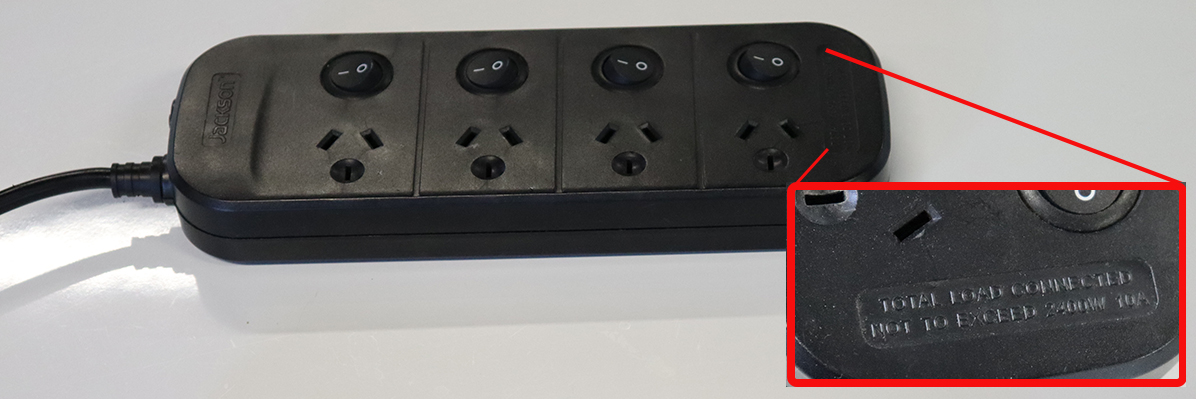
The combined amps or watts of the plugged in devices or appliances should not exceed the maximum capacity of the power board.

The table below lists the average Watts used for common appliances, please check your appliance information for the exact power use.
| Appliance | Average Watts used |
|---|---|
| Desk Lamp (with 60W bulb) | Desk Lamp (with 60W bulb)60 (the bulb rating determines the Watts used) |
| Desk Lamp (LED lights) | 5 |
| Dish Washer* | 2200 |
| Iron* | 3000 |
| Kettle* | Up to 3000 |
| Laptop | Up to 100 |
| Mobile phone charger | Up to 20 (single device charging) |
| Power tools battery charger | Up to 350 |
* High current devices
It is strongly recommended that high current appliances are plugged directly into a power point rather than a power board.
Do not string power boards or extension cords
Stringing is when you power one power board by plugging it into another to increase the number of outlets available and/or increase the reach as shown in the image below. This practice is unsafe and could overload one or more of the power boards.
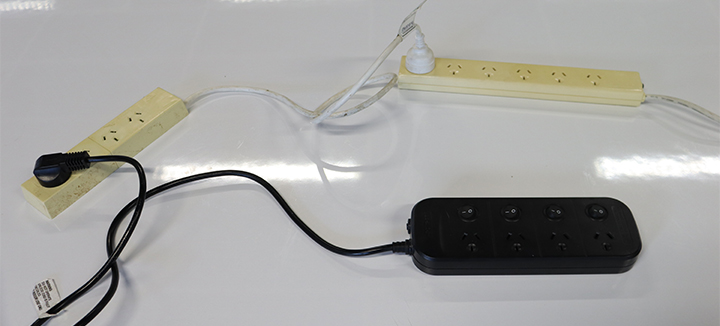
The rule applies to extension cords as well. If you need a 10-metre extension cord, it is safe to buy a 10-metre cord, rather than plugging two 5 metre cords together.
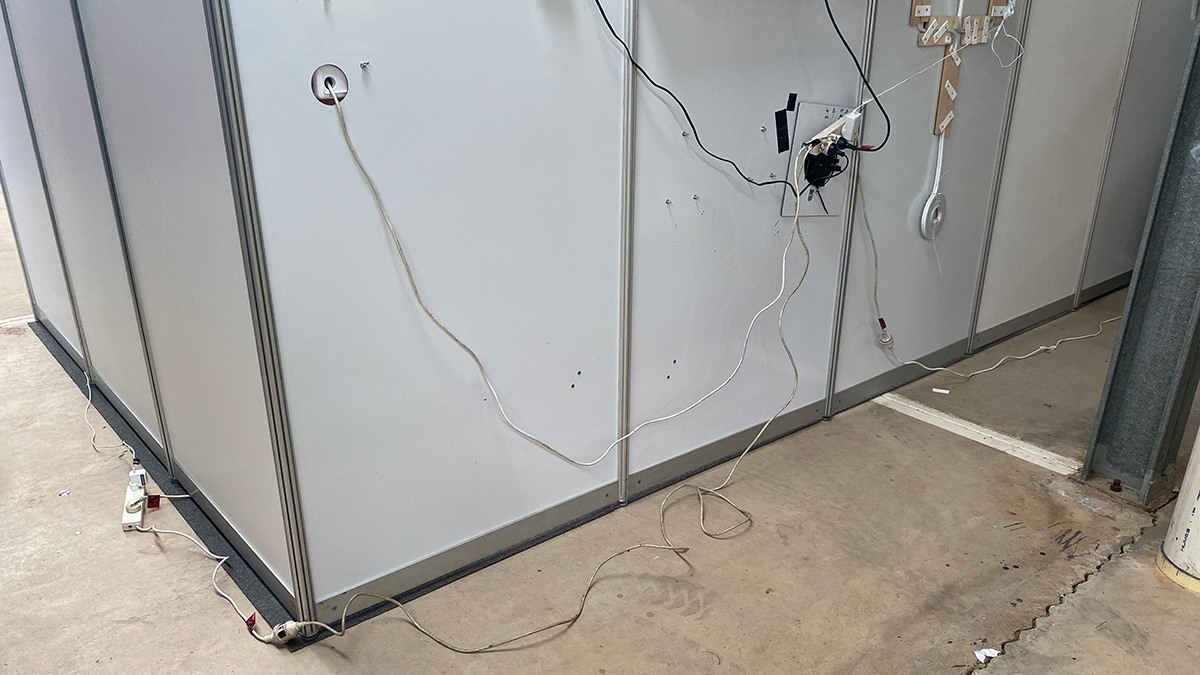
Correct way to power multiple power boards
The correct way to power multiple power boards from a single power point is to use a portable socket-outlet assemblies (PSOA), commonly known as an outlet box. Outlet boxes have built in circuit breakers and a residual current device (RCD), also known as a safety switch and generally have up to four outlets.
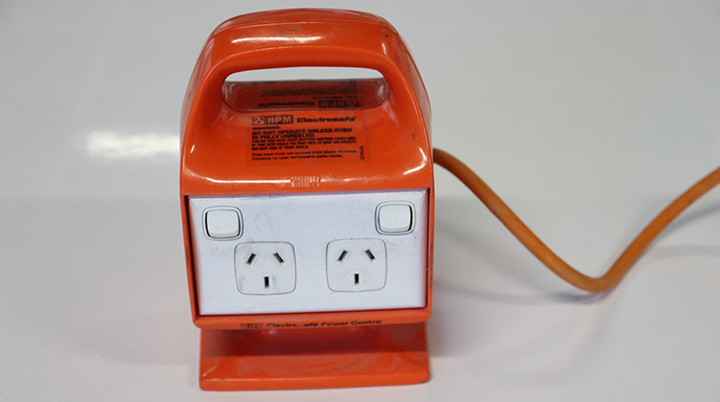
Outlet boxes are available for industrial or commercial setting with three phase power that can have more than four outlets.
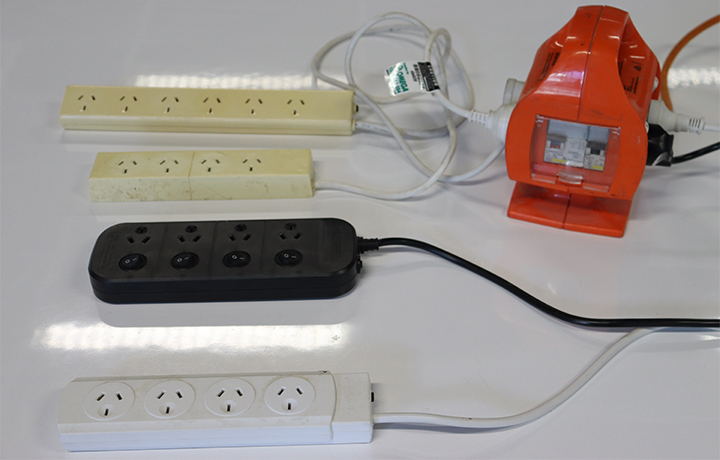
You can connect one power board per outlet on an outlet box, and if the power board doesn’t reach, you can add only one extension to each outlet and power board.
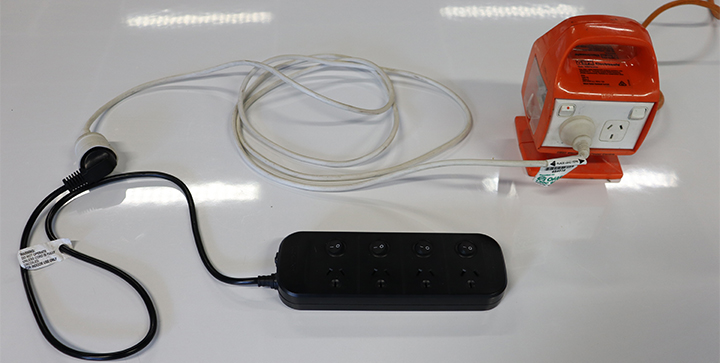
Electrical safety and compliance in the workplace
In the workplace, you are required to manage the risks to health and safety associated with electrical risks under the Northern Territory’s work health and safety laws and electrical safety laws.
These laws call up various Australian Standards related to electrical safety, and stringing power boards and extension cords as mentioned earlier is a breach of Australian Standards.
Other requirements you may have include testing and tagging your electrical equipment and having any RCDs used in the workplace regularly tested.
If you have any questions on electrical safety, please contact the Electrical Safety Unit on 1800 019 115.